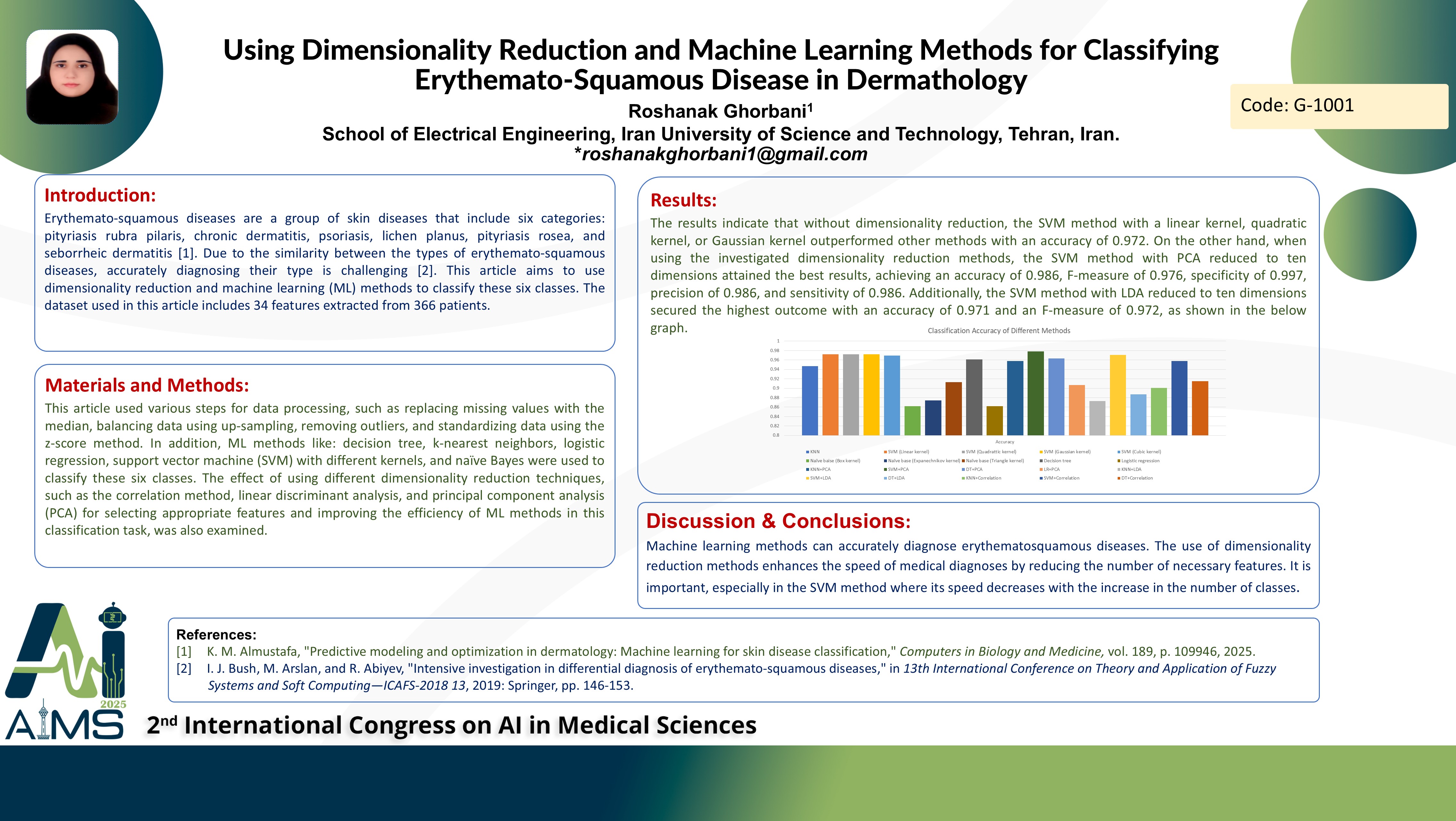استفاده از روش های کاهش بعد و یادگیری ماشینی برای کلاسبندی بیماری های اریتماتوز اسکواموس در درماتولوژی
کد: G-1185
نویسندگان: Roshanak Ghorbani * ℗
زمان بندی: زمان بندی نشده!
برچسب: پردازش سیگنال های پزشکی
دانلود: دانلود پوستر
خلاصه مقاله:
خلاصه مقاله
Background and aims: Erythemato-squamous diseases are a group of skin diseases that include six categories: pityriasis rubra pilaris, chronic dermatitis, psoriasis, lichen planus, pityriasis rosea, and seborrheic dermatitis. Due to the similarity between the types of erythemato-squamous diseases, accurately diagnosing their type is challenging. This article aims to use dimensionality reduction and machine learning (ML) methods to classify these six classes. The dataset used in this article includes 34 features extracted from 366 patients. Among these features, 12 were directly measured from the patients, and 22 were measured from the biopsy samples of the patients’ skin. Method: This article used various steps for data processing, such as replacing missing values with the median, balancing data using up-sampling, removing outliers, and standardizing data using the z-score method. In addition, ML methods like: decision tree, k-nearest neighbors, logistic regression, support vector machine (SVM) with different kernels, and naïve Bayes were used to classify these six classes. The effect of using different dimensionality reduction techniques, such as the correlation method, linear discriminant analysis, and principal component analysis (PCA) for selecting appropriate features and improving the efficiency of ML methods in this classification task, was also examined. Results: The results indicate that without dimensionality reduction, the SVM method with a linear kernel, quadratic kernel, or Gaussian kernel outperformed other methods with an accuracy of 0.972. On the other hand, when using the investigated dimensionality reduction methods, the SVM method with PCA reduced to ten dimensions attained the best results, achieving an accuracy of 0.986, F-measure of 0.976, specificity of 0.997, precision of 0.986, and sensitivity of 0.986. Additionally, the SVM method with LDA reduced to ten dimensions secured the highest outcome with an accuracy of 0.971 and an F-measure of 0.972. Conclusion: Machine learning methods can accurately diagnose erythematosquamous diseases. The use of dimensionality reduction methods enhances the speed of medical diagnoses by reducing the number of necessary features. It is important, especially in the SVM method where its speed decreases with the increase in the number of classes.
کلمات کلیدی
Machine Learning, Dermatology, Classification, Dimension Reduction.
